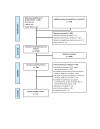Characteristics of influenza, SARS-CoV-2, and RSV surveillance systems that utilise ICD-coded data: a systematic review
- PMID: 40406976
- PMCID: PMC12100576
- DOI: 10.7189/jogh.15.04177
Characteristics of influenza, SARS-CoV-2, and RSV surveillance systems that utilise ICD-coded data: a systematic review
Abstract
Background: Some surveillance systems for influenza, severe acute respiratory syndrome coronavirus 2 (SARS-CoV-2), and respiratory syncytial virus (RSV) utilise International Classification of Diseases (ICD)-coded data and are useful for analysing trends and enhancing quick, evidence-based decisions against the epidemic potential that threatens global health security. With variations in the design of systems globally, the World Health Organization requested a systematic review to identify key characteristics of influenza, SARS-CoV-2, and RSV surveillance systems that utilise ICD-coded data, and to assess their performance.
Methods: We searched EMBASE, MEDLINE, and Global Health to identify relevant studies reporting on influenza, SARS-CoV-2, and RSV surveillance systems that use ICD-coded data. We independently assessed studies for the ICD codes used, their statistical estimates and limitations. We appraised included studies using Joana Briggs Institute's critical appraisal tools and synthesised using narrative synthesis.
Results: We identified 77 studies, reporting on 71 surveillance systems - 33 systems recorded surveillance data only, 15 systems recorded burden of disease data only, and 23 systems recorded both surveillance and burden of disease data. Surveillance systems utilised ICD-10 codes (75%), ICD-9 codes (22%), or both (3%). ICD-10 codes J09 and J10 were frequently used for influenza, U07.1 for COVID-19, and B97.4, J12.1, J20.5, and J21.0 for RSV. ICD-9 codes 487 and 488 were mostly used for influenza, and codes 466.11 and 480.1 for RSV. ICD-10 codes had low-to-moderate sensitivity (6.60-79.87%) and high specificity (97.40-99.72%) for influenza, low-to-high sensitivity (30.00-98.4%) and specificity (39.50-99.80%) for COVID-19, and low-to-high sensitivity (6.00-99.80%) and specificity (12.10-100.00%) for RSV. ICD-9 codes had low sensitivity (45.60%) and high specificity (97.90%) for influenza. Underestimation of infections or mortality attributable to influenza, SARS-CoV-2, or RSV is a major limitation to using ICD-coded data across surveillance systems.
Conclusions: The performance of ICD codes for syndromic- or disease-specific surveillance remains inconclusive, although using only ICD-coded data within these systems may underestimate influenza, SARS-CoV-2, or RSV-attributable morbidity and mortality. Future studies should assess the accuracy of ICD code combinations for surveillance of influenza, SARS-CoV-2, and RSV.
Copyright © 2025 by the Journal of Global Health. All rights reserved.
Conflict of interest statement
Disclosure of interest: The authors completed the ICMJE Disclosure of Interest Form (available upon request from the corresponding author) and disclose no relevant interests.
Figures
References
-
- Alharbi MA, Isouard G, Tolchard B.Historical development of the statistical classification of causes of death and diseases. Cogent Med. 2021;8:1893422. 10.1080/2331205X.2021.1893422 - DOI
-
- World Health Organization. WHO Family of International Classifications (FIC). 2024. Available: https://www.who.int/standards/classifications/frequently-asked-questions.... Accessed: 15 December 2024.
-
- World Health Organization. Global epidemiological surveillance standards for influenza. 2013. Available: https://www.who.int/publications/i/item/9789241506601. Accessed: 15 December 2024.
-
- World Health Organization. International Statistical Classification of Diseases and Related Health Problems (ICD). 2024. Available: https://www.who.int/standards/classifications/classification-of-diseases. Accessed: 15 December 2024.
Publication types
MeSH terms
LinkOut - more resources
Full Text Sources
Medical
Miscellaneous

